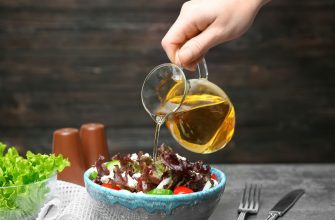Food safety is a crucial aspect of everyday life, ensuring that the meals we consume are free from harmful bacteria, viruses, and other contaminants. In this comprehensive guide, we will explore the science behind food safety, including proper storage, handling, and cooking techniques to minimize the risk of foodborne illnesses.
Understanding Foodborne Illnesses
Foodborne illnesses are caused by consuming contaminated food or beverages. Common pathogens include bacteria such as Salmonella, E. coli, and Listeria, as well as viruses like norovirus and hepatitis A. Symptoms can range from mild discomfort to severe and life-threatening complications. To prevent foodborne illnesses, it’s essential to follow good hygiene and food safety practices.
Proper Food Storage
- Temperature Control: Keep perishable foods in the refrigerator at 40°F (4°C) or below, and frozen foods at 0°F (-18°C) or below. Store dry goods in a cool, dry place.
- Separation: Avoid cross-contamination by separating raw meats, poultry, and seafood from other foods, particularly fruits and vegetables. Use separate cutting boards and utensils for raw and cooked foods.
- FIFO Method: Use the “First In, First Out” method when storing food to ensure that older items are used before they spoil. Rotate your stock by placing newer items behind older ones.
Safe Food Handling
- Hand Washing: Wash your hands with warm, soapy water for at least 20 seconds before and after handling food, using the restroom, or touching any surfaces that may be contaminated.
- Clean Surfaces and Utensils: Regularly clean and sanitize cutting boards, countertops, and utensils to prevent the spread of harmful bacteria.
- Thawing Food: Thaw frozen food safely in the refrigerator, under cold running water, or in the microwave. Never thaw food at room temperature.
Proper Cooking Techniques
- Use a Food Thermometer: Ensure that foods are cooked to the appropriate internal temperature to kill harmful bacteria. Poultry should be cooked to 165°F (74°C), ground meats to 160°F (71°C), and whole cuts of beef, pork, and lamb to at least 145°F (63°C).
- Don’t Undercook: Cooking food thoroughly reduces the risk of foodborne illnesses. Avoid consuming raw or undercooked meats, poultry, and seafood.
- Reheating Leftovers: Reheat leftovers to a minimum internal temperature of 165°F (74°C) to ensure that any lingering bacteria are destroyed.
Preventing Cross-Contamination
- Separate Raw and Cooked Foods: Keep raw and cooked foods separate during preparation and storage to prevent the transfer of bacteria.
- Wash Produce: Rinse fruits and vegetables under running water to remove dirt and potential contaminants. Use a vegetable brush to scrub firm produce like potatoes and melons.
- Use Different Cutting Boards: Designate specific cutting boards for raw meats, poultry, seafood, and produce to prevent cross-contamination.
Safe Food Preservation Techniques
Preserving food safely is an essential aspect of food safety. By using the proper techniques, you can extend the shelf life of your food while maintaining its quality and safety. Here are some popular food preservation methods to consider:
- Canning: Canning involves placing food in airtight jars and heating them to a specific temperature to destroy microorganisms and inactivate enzymes. This method works well for preserving fruits, vegetables, and even meats. Always follow the recommended processing times and temperatures to ensure safe, shelf-stable canned goods.
- Freezing: Freezing slows down the growth of microorganisms and enzymatic reactions, thus preserving the food’s quality. Freeze food in airtight containers or freezer-safe bags to prevent freezer burn. It’s crucial to label and date your frozen items to ensure proper rotation and usage.
- Dehydrating: Removing moisture from food inhibits the growth of bacteria, yeasts, and molds. You can use a food dehydrator, oven, or even air drying for some items, like herbs. Store dehydrated foods in airtight containers in a cool, dry place to maintain their quality.
- Fermenting: Fermentation is a natural preservation method that relies on the action of beneficial bacteria to create an acidic environment, inhibiting the growth of harmful pathogens. Examples of fermented foods include yogurt, sauerkraut, and kimchi. Always follow proper fermentation guidelines to ensure safe and tasty results.
Conclusion
Understanding the science behind food safety is essential for anyone who cooks, whether you’re a novice or an experienced chef. By practicing proper food storage, handling, cooking techniques, and preservation methods, you can minimize the risk of foodborne illnesses and ensure that your culinary creations are both safe and delicious. Keep these tips in mind as you continue your journey in the kitchen, and you’ll be well on your way to mastering the art of food safety.


